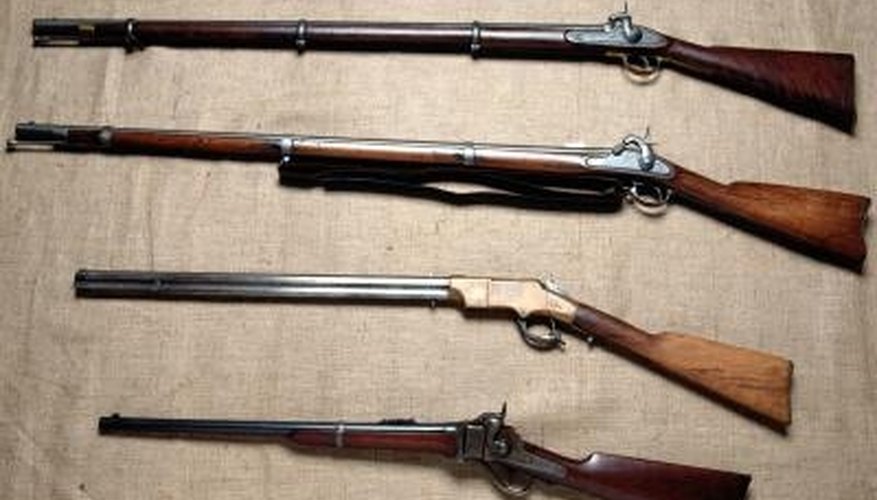
Identifying and verifying the authenticity of an 1873 Springfield Trapdoor rifle or carbine is important in recognizing one of these weapons as a true collector's piece. The Springfield Trapdoor rifles and carbines were a series of breech loading rifle and carbine weapons built from 1865 to about 1888, beginning with the Model 1865 and then with other models being introduced every few years. The Model 1873 is the most popular with collectors. Using some simple information and tools, you can recognize an actual 1873 Springfield Trapdoor rifle or carbine and determine the value of it.
Items you will need
1873 Springfield Trapdoor rifle or carbine
Black powder gun collector's value guide
Gun caliber gauge
Find the listings for the value of the weapon you are examining in the black powder gun collector's value guide. These will tell you what the value of the gun is based upon the condition you find the gun in. The values can range from about $800 for a rough but decent condition rifle to over $4,000 for a weapon in factory-new condition.
Look at the barrel of the weapon and make sure that it is silver in color, indicating that it is made of steel and not iron. If the metal of the barrel is black, then the barrel is made of iron and you are looking at an earlier model Springfield Trapdoor weapon, perhaps the Model 1865.
Use the gun caliber gauge to measure the inside diameter of the weapon's barrel and look to see if it is indicating caliber .45. If so, this is the correct caliber of the 1873 Springfield Trapdoor rifle and carbine and later models of the Springfield Trapdoor. Earlier models were caliber .50 and caliber .58. Then examine the weapon's rifling to check that it is made up of three concentric plain grooves with the width equal to the lands or flat spaces between the grooves in the weapon's barrel. If it is different than this, you are looking at an earlier version of the Springfield Trapdoor. The grooves when measured for depth by the gun caliber gauge should be .005-inches deep and have a consistent twist of one turn in 22 inches throughout the weapon's length.
Examine the lock plate and make sure that it has no bevel on the edge. Also, the lock plate of the weapon should be marked with the following text in this order when read from top to bottom, "U.S. Springfield 1873." If the lock plate is marked with this text, then this is a lock plate for an 1873 Springfield Trapdoor rifle or carbine.
Look at the stock around the lock plate. This should be rounded off where the lock plate meets the stock. If not, then you have an earlier model Springfield Trapdoor.
Examine the entire barrel of the rifle or carbine and make sure that there are no reproducer's markings anywhere on the barrel because there are reproductions of this weapon. Also, look to make sure that there are not areas on the barrel that indicate that these markings may have been ground off with a grinder. This will ensure that the weapon you have is an actual 1873 Springfield Trapdoor rifle or carbine and not a reproduction.
Look at the gun's most forward band that is securing the barrel to the stock. There will be an open or stacking swivel here that was used for stacking the rifles and carbines when bayonets were not attached. If the weapon is missing this part, you may have either an earlier model Springfield Trapdoor or you may have a reproduction. This is the final observation to consider when identifying and verifying the authenticity of an 1873 Springfield Trapdoor rifle or carbine.
References
Writer Bio
Robert Dyer has worked as a freelance writer since 1998. He has had articles published in "Mississippi Gulf Coast Historical Quarterly. Dyer has a Bachelor of Arts in history from the University of South Alabama.


